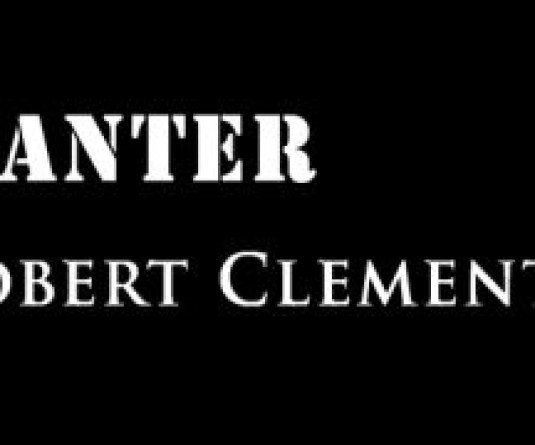
The Naga National movement, regarded as ‘the mother of all insurgents’ in north-east India and one of the oldest unresolved armed conflicts in the world, is inching towards solution if we are to believe the news items published in media. It is a fact that the Naga Movement did not remain in isolation (as Naga issue) but is looked upon worldwide with keen interest by many indigenous people’s groups fighting for their rights as guiding light towards achieving their aspiration too. Hence, the wisdom of Naga leaders will be judged not only by Naga people alone but also by all the indigenous people of the world. After more than 60 rounds of talks in secrecy, today we have a glimpse of what was discussed for more than 10 years of ceasefire. Despite the struggle for sovereignty for more than 60 years, the 33 points as mention in “The Working Paper on Political Solution” of the Naga people emerges to be a ‘minimalist proposal” - but that falls within the ‘expected framework’ imposed by various prevailing factors. Disunity among the Naga National workers (NNWs) is one main factor that results to adopting minimalist proposal where bargaining power was reduced to the strength of one faction/group (in spite of the claim of the group that they have the mandate of Naga people). The other reason is the widening gap between Naga freedom fighters (NNWs) and people of grass-root level. No longer does the Movement receive massive support from the general public as it was once before. The fast changing global scenario and India’s emergence as super power country might have its own role in giving birth to such agenda as well.
More than ever before, Naga leaders and thinkers must speak out and share their opinion on the issue. If we keep silent now, it may take another 10 or 20 years to bring solution - where there will be more violence and bloodshed. If we examine seriously the present situation, it is doubtful that there will ever be unification among the various Naga underground groups. While acknowledging the enormous contribution of and sacrifices made by all NNWs towards the cause of the Nagas, the NNWs also need to ponder in depth on the prospect of achieving the desired goal in totality in the midst of disunity, lack of public support and fast changing global scenario. There is limit for everything. There is time for everything. Personally, I feel it is right time for the Nagas to settle for any type of ‘Solution’ within India for a moment- and then give space for evolving a strong civil society (such as Naga Hoho-the apex civil organization of the Nagas) and hand over the responsibility of pursuing the Naga cause further. All NNWs can come overground and become part of this civil society and continue to strive for Nagas’ rights. This is the only feasible platform for different Naga underground groups and the whole Nagas to come together under one umbrella. Then the voice of the Nagas can be aired in unison through Naga Hoho. NNWs needs to weigh and see whether insurgent method or democratic form of protest leading by civil organization through garnering public support is the better way to pursue and assert one’s right in today’s world.
The immediate need of the hour is to start identifying clearly all the Naga-inhabited areas of the neighbouring states of Nagaland and brought under the Sixth Schedule and form district autonomous councils or regional councils in which the Naga Hoho would have a say in their running. The emerging structures could then negotiate their linkages with the present state of Nagaland (such as extension of article 371 (A) to all Naga inhabited areas). This will consolidate the identity of the Naga people presently outside Nagaland. The Naga Hoho can then introduce the common form of administration in all Naga inhabited areas by establishing indigenous forms of governance. Territorial integrity would thus be preserved but the Naga communities would be united emotionally and would be self-governing within the existing states. Peace and social security can thus be achieved. Economy and natural resources can be protected and enhanced. Nagas will be politically empowered to a great extent. Cultural identity and uniqueness of Naga history can be maintained. From this perspective, the present ‘working paper on political solution’ of NSCN and GOI, although emerge to be a ‘minimalist proposal,’ needs deeper analysis by general public, accept and appreciate for bringing such workable arrangement (solution) for the Nagas. Last but not the least, we need to remind ourselves again that the present form of proposed arrangement (33 points) cannot be considered as an ‘end’ of freedom movement but a new ‘beginning’ that would give birth to a new direction (shifting of responsibility from undergroup groups to civil society) to pursue and achieve the right of self-determination of the Nagas.
NB: It must be noted that the NSCN (IM) had denied the 33 points as genuine but the author of this article feels rewarding to think of the Naga Solution from that perspective and published here his view.
Contact the writer at zkpahr@gmail.com
More than ever before, Naga leaders and thinkers must speak out and share their opinion on the issue. If we keep silent now, it may take another 10 or 20 years to bring solution - where there will be more violence and bloodshed. If we examine seriously the present situation, it is doubtful that there will ever be unification among the various Naga underground groups. While acknowledging the enormous contribution of and sacrifices made by all NNWs towards the cause of the Nagas, the NNWs also need to ponder in depth on the prospect of achieving the desired goal in totality in the midst of disunity, lack of public support and fast changing global scenario. There is limit for everything. There is time for everything. Personally, I feel it is right time for the Nagas to settle for any type of ‘Solution’ within India for a moment- and then give space for evolving a strong civil society (such as Naga Hoho-the apex civil organization of the Nagas) and hand over the responsibility of pursuing the Naga cause further. All NNWs can come overground and become part of this civil society and continue to strive for Nagas’ rights. This is the only feasible platform for different Naga underground groups and the whole Nagas to come together under one umbrella. Then the voice of the Nagas can be aired in unison through Naga Hoho. NNWs needs to weigh and see whether insurgent method or democratic form of protest leading by civil organization through garnering public support is the better way to pursue and assert one’s right in today’s world.
The immediate need of the hour is to start identifying clearly all the Naga-inhabited areas of the neighbouring states of Nagaland and brought under the Sixth Schedule and form district autonomous councils or regional councils in which the Naga Hoho would have a say in their running. The emerging structures could then negotiate their linkages with the present state of Nagaland (such as extension of article 371 (A) to all Naga inhabited areas). This will consolidate the identity of the Naga people presently outside Nagaland. The Naga Hoho can then introduce the common form of administration in all Naga inhabited areas by establishing indigenous forms of governance. Territorial integrity would thus be preserved but the Naga communities would be united emotionally and would be self-governing within the existing states. Peace and social security can thus be achieved. Economy and natural resources can be protected and enhanced. Nagas will be politically empowered to a great extent. Cultural identity and uniqueness of Naga history can be maintained. From this perspective, the present ‘working paper on political solution’ of NSCN and GOI, although emerge to be a ‘minimalist proposal,’ needs deeper analysis by general public, accept and appreciate for bringing such workable arrangement (solution) for the Nagas. Last but not the least, we need to remind ourselves again that the present form of proposed arrangement (33 points) cannot be considered as an ‘end’ of freedom movement but a new ‘beginning’ that would give birth to a new direction (shifting of responsibility from undergroup groups to civil society) to pursue and achieve the right of self-determination of the Nagas.
NB: It must be noted that the NSCN (IM) had denied the 33 points as genuine but the author of this article feels rewarding to think of the Naga Solution from that perspective and published here his view.
Contact the writer at zkpahr@gmail.com






